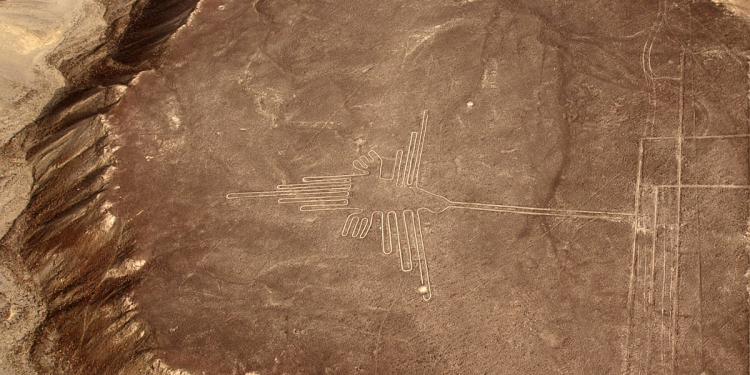Watch all the Transform 2020 sessions on-demand here.
Ever heard of the Nazca Lines? They’re literal lines etched in the sands of southern Peru covering an area of nearly 1,000 square kilometers, which depict over 300 different figures including animals and plants. The best evidence suggests that they’re pre-Columbian in origin, dating from between roughly 500 BC and 500 AD, and that they might mark solstice points or serve as offerings to ancient deities. Although the Nazca Lines have been studied for decades (and more intensely since they were designated a UNESCO World Heritage site in 1994), they’ve yet to be fully mapped.
Researchers at Japan’s Yamagata University worked with researchers at IBM to use the company’s PAIRS Geoscope to gain unprecedented insights into the Nazca Lines’ origins. The IBM PAIRS Geoscope is a cloud-hosted platform for scaling geospatial analytics to large and complex data sets. It can be used for temporal data query and analytics services, and it was ideally suited to work in tandem with the university’s satellite- and drone-based remote hyperspectral sensing and imagery. It’s already helped researchers spot a new formation, one of the first since an earlier batch of 100 geoglyphs the Yamagata team uncovered.
Yamagata used IBM’s Watson Machine Learning Accelerator (WMLA) — a framework designed to handle large-scale workloads spanning clusters of machines — to expedite their analyses. After training an AI model to identify formations, the researchers fed the system additional data to see if it could pick out previously hidden markings. This wasn’t an easy feat — an overwhelming amount of “white noise” surrounds the Nazca Lines, including roads and flood trails — but the process was ultimately a success. The model discovered a humanoid-like figure that the team hadn’t previously detected.
“Working together, IBM Research and Yamagata look forward to integrating multi-modal, disparate and large data sets using PAIRS,” wrote IBM Research staff member Johannes Schmude in a blog post. “Their hope is that by training AI and deep learning models on these volumes of unique and unstructured information, they will be able to [make] greater discoveries … surrounding the Nazca Lines.”
June 5th: The AI Audit in NYC
Join us next week in NYC to engage with top executive leaders, delving into strategies for auditing AI models to ensure fairness, optimal performance, and ethical compliance across diverse organizations. Secure your attendance for this exclusive invite-only event.
It’s not the first time AI and machine learning have been applied to analyses of this sort. In a preprint paper published last September, a team of researchers described an AI model that could detect, isolate, and classify ancient letters carved on the stone walls of a Kiev cathedral. In March, a team hailing from the Alan Turing Institute, the University of Warwick, the University of Helsinki, and Amazon proposed a model that taps categorical metadata to uncover the evolution of meanings in Ancient Greek data sets. And more recently, Google parent company Alphabet’s DeepMind trained an algorithm to guess missing words or characters from Greek inscriptions on stone, ceramic, and metal that were between 1,500 and 2,600 years old.


